Real Indiana Jones stuff, this is: Baja’s prehistoric cave paintings, or as they are known in BCS, Pinturas Rupestres en Baja California Sur. They are in the Sierra de San Francisco mountains in an area north of San Ignacio on the eastern side of the peninsula.
No one knows for certain how old these paintings are or who created them. Conventional wisdom holds that the prehistoric Comondú people (ancestors of the Cochimí natives first encountered by Spanish explorers in the 1600s) created the paintings perhaps 7500 years ago, but like I said, no one knows for sure. One of the very few relatively accessible sites is about 520 miles south of Tijuana, but don’t let the miles fool you. You’ll need a very full day of hard traveling once you’ve crossed the border to reach Guerrero Negro, and it will be a full day from there to get to the cave paintings and return.

There are well over a hundred known prehistoric Baja cave painting sites throughout the peninsula (there may be others yet to be discovered) and with very few exceptions, most involve traveling by mule for a day or two through difficult terrain. One of those exceptions, though, is the Cueva del Raton site (the subject of this blog). Getting there makes for a grand adventure, and you can do it in a day if you’re already in San Ignacio to the south or Guerrero Negro to the north. Our advice is to visit Guerrero Negro and take in the whale watching, have a grand breakfast at Malarrimo’s the next morning, and then head southeast on Mexico Highway 1. Guerrero Negro is where Mexico Highway 1 turns to cut across the peninsula to the Sea of Cortez. You’ll head southeast for about an hour. Keep your eyes open and watch for the Pinturas Rupestres sign pointing to the left. Trust me on this: The ride into the mountains is grand. The road runs straight as an arrow for maybe 15 miles, with the at first distant and magnificent Sierra de San Francisco mountains straight ahead.
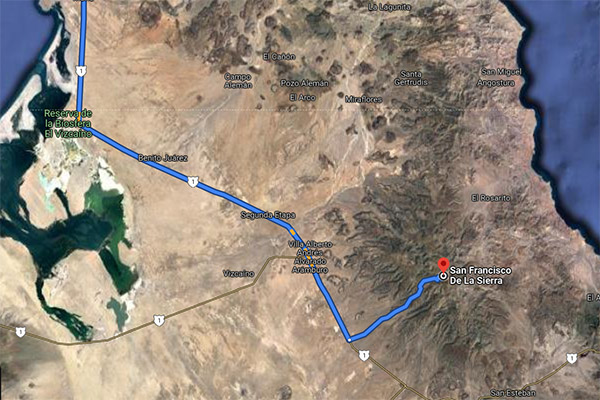
Then the road climbs through a series of desolate, precipitous, and tight switchbacks with stunning views in literally every direction. I don’t use the word stunning lightly: The ride into the Sierra de San Francisco Mountains is, all by itself, worth a Baja trip. I’ve never seen other vehicles out there, unless they were fellow riders in the groups I’ve led to the cave paintings. I’ve seen goat herds tended by shepherds and sheep dogs (don’t tempt those dogs; sheep dogs in general are fiercely protective of their flock and the ones in this region seem particularly aggressive). You may see other things out there as well. On one trip, I had a close encounter with a very docile Mexican Red rattlesnake.
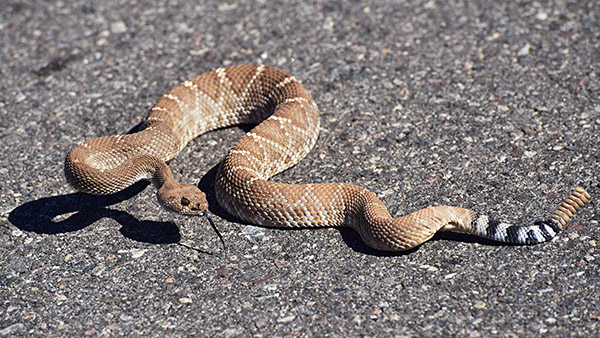
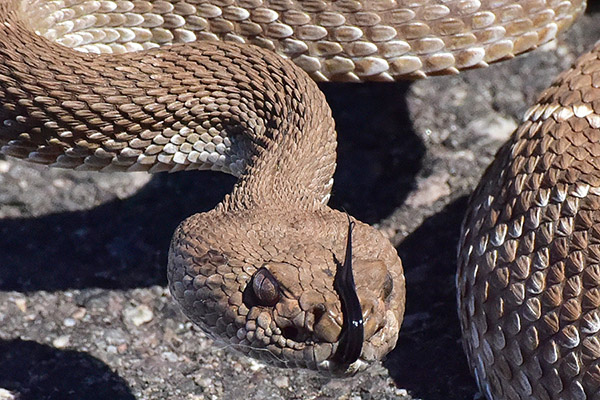
The road to the Cueva del Raton site (after you leave Mexico Highway 1) is paved for maybe 15 miles, and then the pavement ends for the next maybe 10 miles. I would call it a fairly gnarly dirt road, but I’m an old guy and what’s gnarly to me may not be to you. I wouldn’t attempt to ride it two up on a motorcycle. I’ve done it in my Subaru with no problem and I’ve done it several times on my 250cc CSC RX3 motorcycle. Depending on your skill level, you might be able to do it on a street bike. Common sense is the order of the day: If you’re on a Gold Wing or an FLH-anything, I would not think any less of you if you took a pass. I think towing a trailer or driving a large recreational vehicle on this road would be a very bad move.
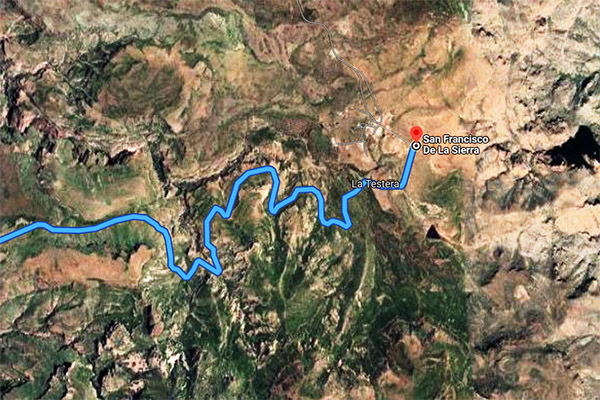


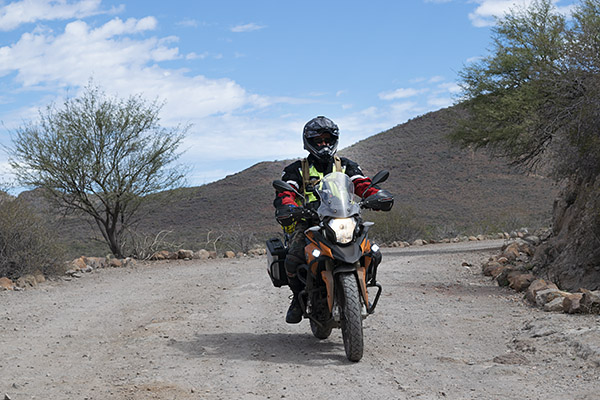
You’ll see the sign for the Cueva Del Raton cave paintings on your right, but you can’t just go in. There’s a locked gate and a set of stairs to get to the cave paintings, and to get in, you’ll need to buy a ticket. There are two little villages in this area. One is almost directly opposite the Cueva Del Raton site; the other is another two or three miles along the same dirt road (which dead ends in the little village of San Francisco de la Sierra). At times I’ve tried to buy tickets in the little village directly across from the cave painting site and they sent me on to San Francisco de la Sierra, and at other times I’ve gone up to San Francisco de la Sierra and they’ve sent me back to the little village near the cave paintings. The fees are modest and I always use larger Mexican bills and tell the people there to keep the change. You’ll have to sign in when you purchase your ticket. The cave paintings are a UNESCO World Heritage site. Seeing them is a big deal.
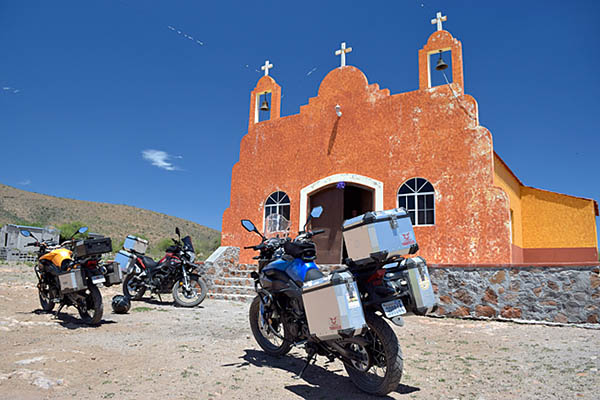
After you have purchased your tickets, one of the guides will meet you at the locked entrance to the Cueva del Raton site. He will walk down from the village, so you may have to wait a couple of minutes. Sometimes two guides come along. They don’t speak English, so they don’t provide much explanation. But you don’t really need much narration. The paintings speak for themselves, which is no doubt what the artists who created them thousands of years ago intended.


Once the guide unlocks the gate, it’s a modest climb up about three flights of steps, and there you’ll see the cave paintings (the cave is actually more of an overhang). The paintings are protected from the rain and the region’s arid climate have protected them well.
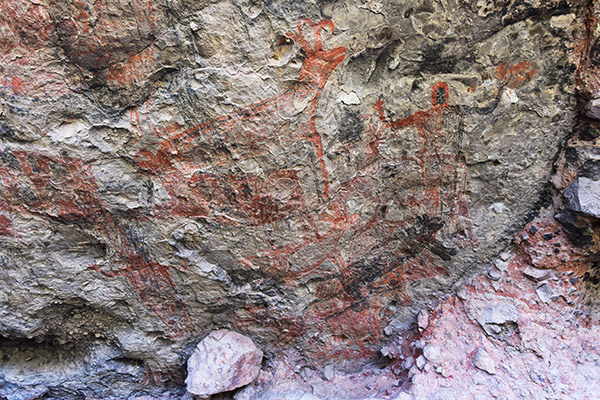
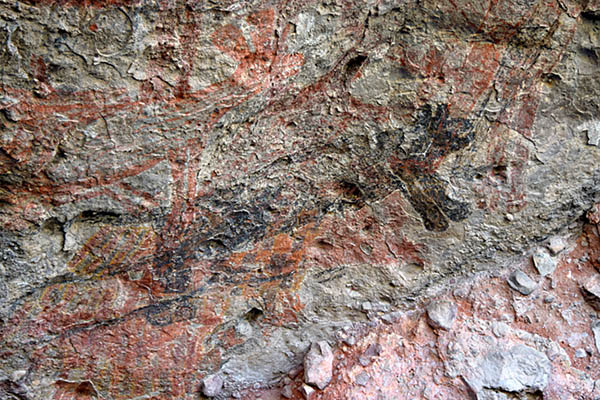
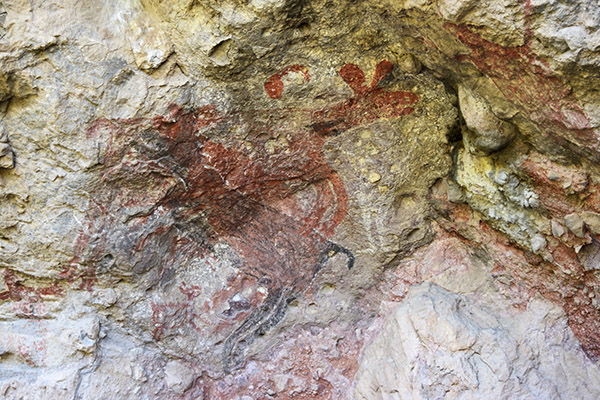
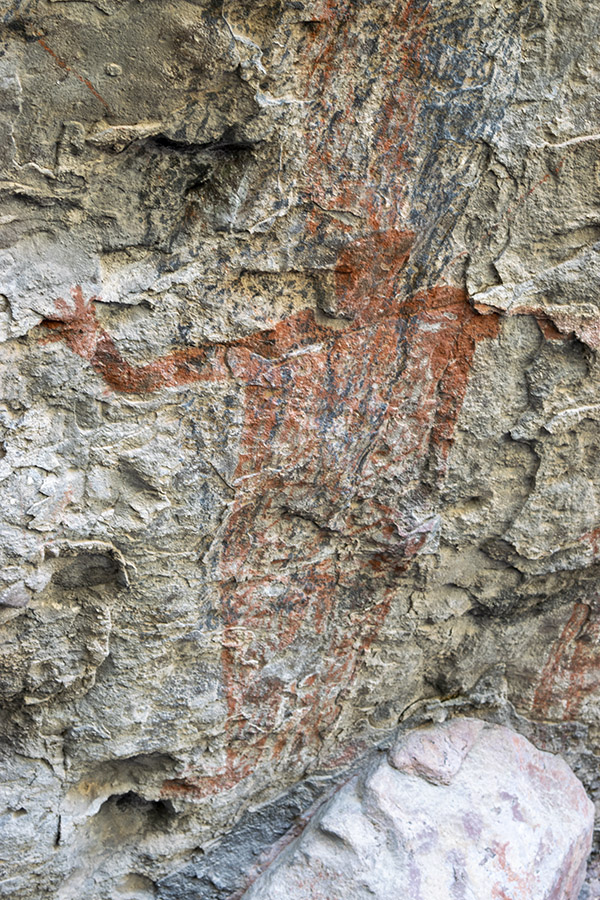
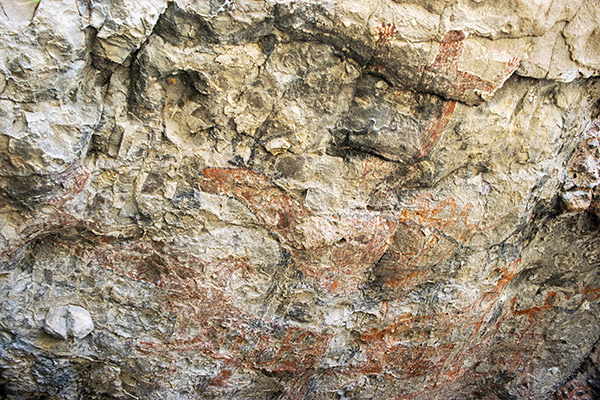
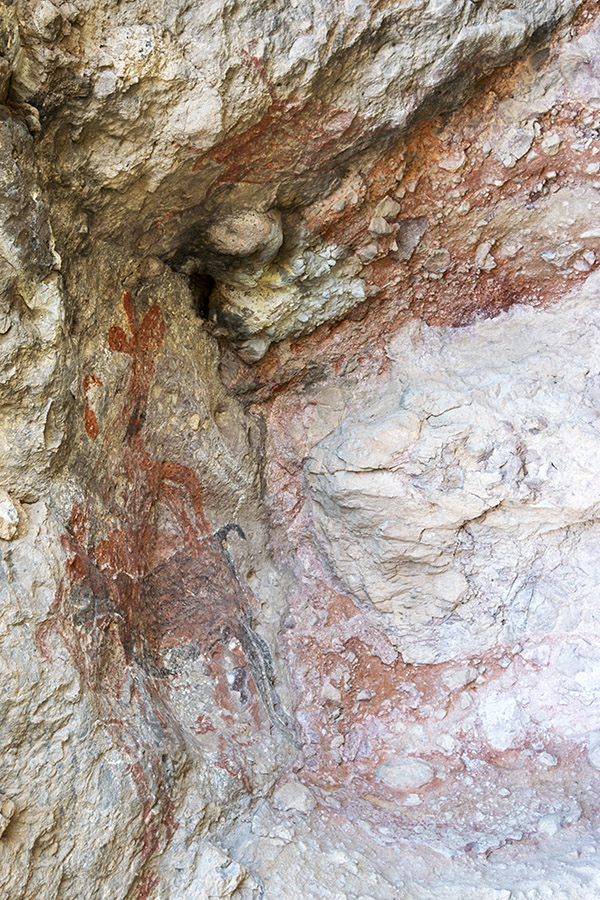
As I mentioned at the start of this blog, there are more than a hundred known cave painting sites throughout Baja and most are relatively inaccessible. I’ve been a Baja traveler for more than 30 years, and many of my trips have been on Mexico Highway 1 down through the Cataviña boulder fields. Several years ago I noticed a new sign for cave paintings just north of Cataviña on a trip with my daughter and three of her college friends. We had to stop. These paintings were just off the main road and I’m pretty sure they were done by the famous Cochimí artist Sherwin Williams and his sidekick, Dutch Boy. Don’t be taken in; you want the real deal and that’s the much further south Cueva del Raton.
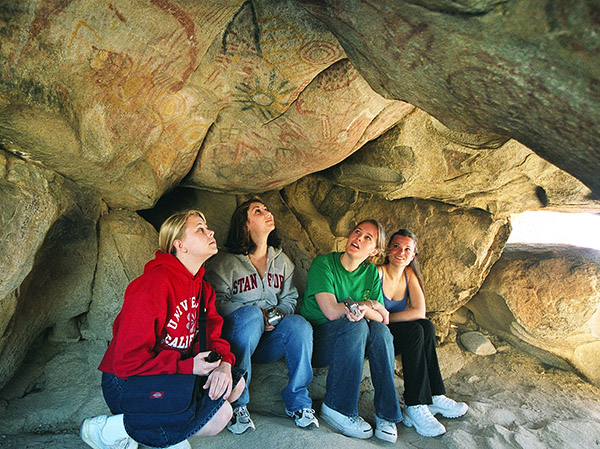
Our preference when traveling by car or motorcycle is BajaBound Insurance. I’ve been using them for years and they are the best.
If you would like to learn more about Baja’s cave paintings, Harry Crosby’s The Cave Paintings of Baja California is a stellar reference with outstanding photos. It’s the best work of its kind on this fascinating topic.
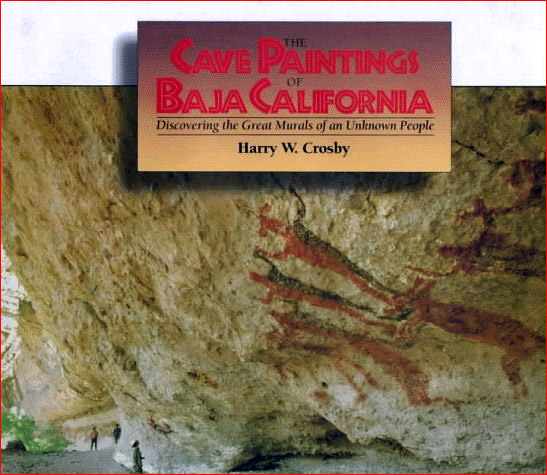
Want more Baja moto adventure? Check out our collection of stories on several trips in the full color Moto Baja book!
The six best bikes for Baja? This one always gets the keyboard commandos wound up!
More on Baja, including favored restaurants, hotels, and destinations? It’s all right here!

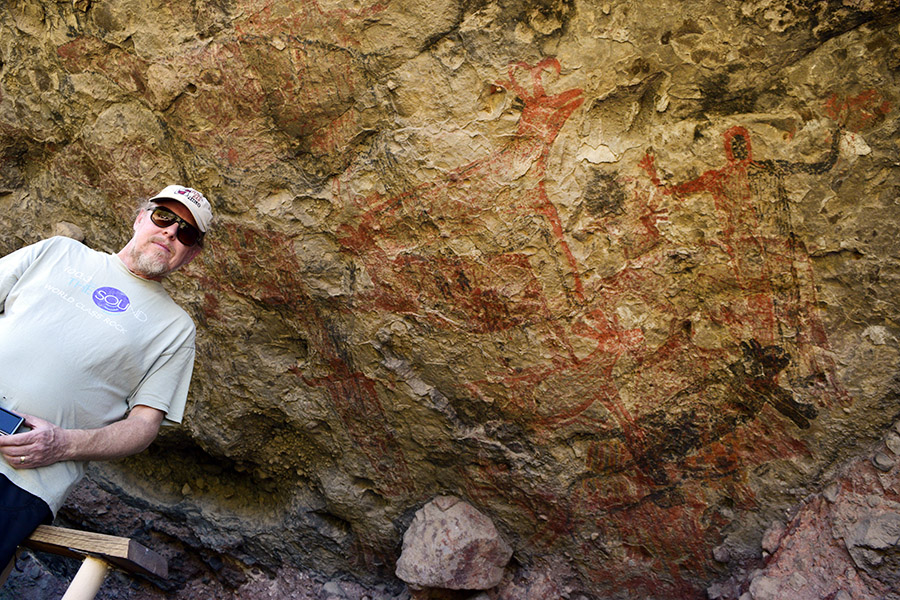

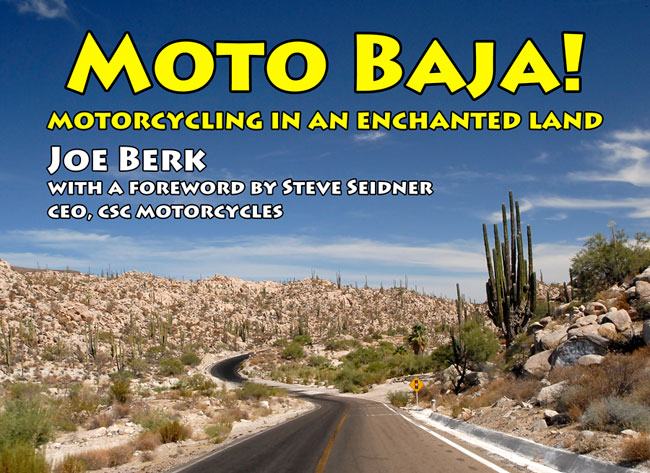
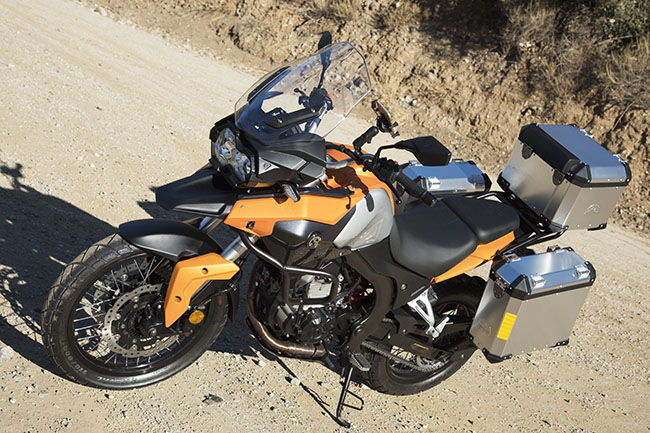
The pictographs near Catavina that are in the photo of your daughter and friends are indeed authentic. Not all the pictographs in Baja look like the ones featured in your articles at Cueva Del Raton, and there are many others that are much better than even those. It is the same with pictographs here in the SW region of the States — some are exquisite, and some are “meh” — like art everywhere, it depends on the skill of the artist……right? So just because something looks like a first-grader did it doesn’t mean it is fake (“Sherwin Williams”, et al).
Will, thanks for commenting. I only started seeing the Catavina location a few years ago. Before that, there were no signs or anything else to indicate their presence. How do you know they are real? I did not see them in the Crosby reference, which I take to be the authoritative work on Baja’s cave paintings. These things, along with their amateurish appearance, led me to believe they are fake. But I’d like to be convinced otherwise.
I have wondered if some of the cave paintings or petroglyphs were done by children. Modern children like to scribble on walls, maybe we haven’t changed all that much.
An interesting thought. Maybe the descendants of those children founded the Crayola company?